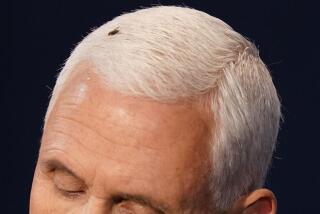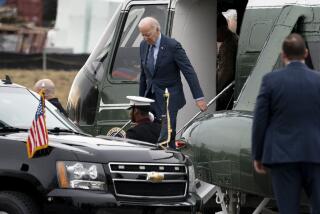Consider the Risk, Then Consider Quayle
Since the vice presidency seems to reduce its occupants to mediocrity, at least temporarily, why hesitate to vote for a candidate who is patently mediocre to begin with? If he can shed some of his puppy-like enthusiasm and acquire a bit of gravitas, Sen. J. Danforth Quayle III might be a respectable presence at the funeral of some foreign head of state. What else do vice presidents do?
But what if the funeral is for the President of the United States?
The possibility of a Quayle presidency, if the Bush-Quayle ticket wins, is much greater than you might think. Consider the historical record since the election of Abraham Lincoln a century and a quarter ago. Twenty-five men have sat in the White House since 1860. No fewer than four of them--Lincoln, James Garfield, William McKinley and John Kennedy-- died at the hands of assassins. That comes to 16%, a death rate that makes the job of a test pilot or an aerialist look safe by comparison. Two more--Warren Harding and Franklin D. Roosevelt--died in office of natural causes, which brings the death rate up to 24%. Woodrow Wilson suffered a debilitating stroke that surely would have led to his removal from the presidency in the nuclear age.
And then there are the near-fatalities. F.D.R. was the target of the bullets that killed Mayor Anton Cermak of Chicago and wounded other passengers in Roosevelt’s limousine in February, 1933. Ronald Reagan escaped death by an inch, and Gerald Ford had a loaded revolver waved at him by a demented woman.
Almost one-quarter of the Presidents in modern times have died in office, and another 16% came uncomfortably close.
It would be foolish to conclude that the winner of the White House this November has a 40% chance of either dying or having a serious brush with death before he steps down. Purists will note that Franklin Roosevelt is double-counted. Perhaps Gerald Ford had less than “a serious brush with death.”
One could be more precise by taking into account years in office and computing an annual risk factor. But the number involved--25--is too small to support more refined analysis. It is quite possible that all of our next 25 Presidents will live out their terms. If I were selling life insurance to our next Chief Executive, I would not insist on charging a premium that assumed such a fearsome mortality rate. But the past record, if it is any guide, does suggest that voters should say “President Quayle” to themselves a few times before pulling the lever.
More to Read
Get the L.A. Times Politics newsletter
Deeply reported insights into legislation, politics and policy from Sacramento, Washington and beyond. In your inbox three times per week.
You may occasionally receive promotional content from the Los Angeles Times.










